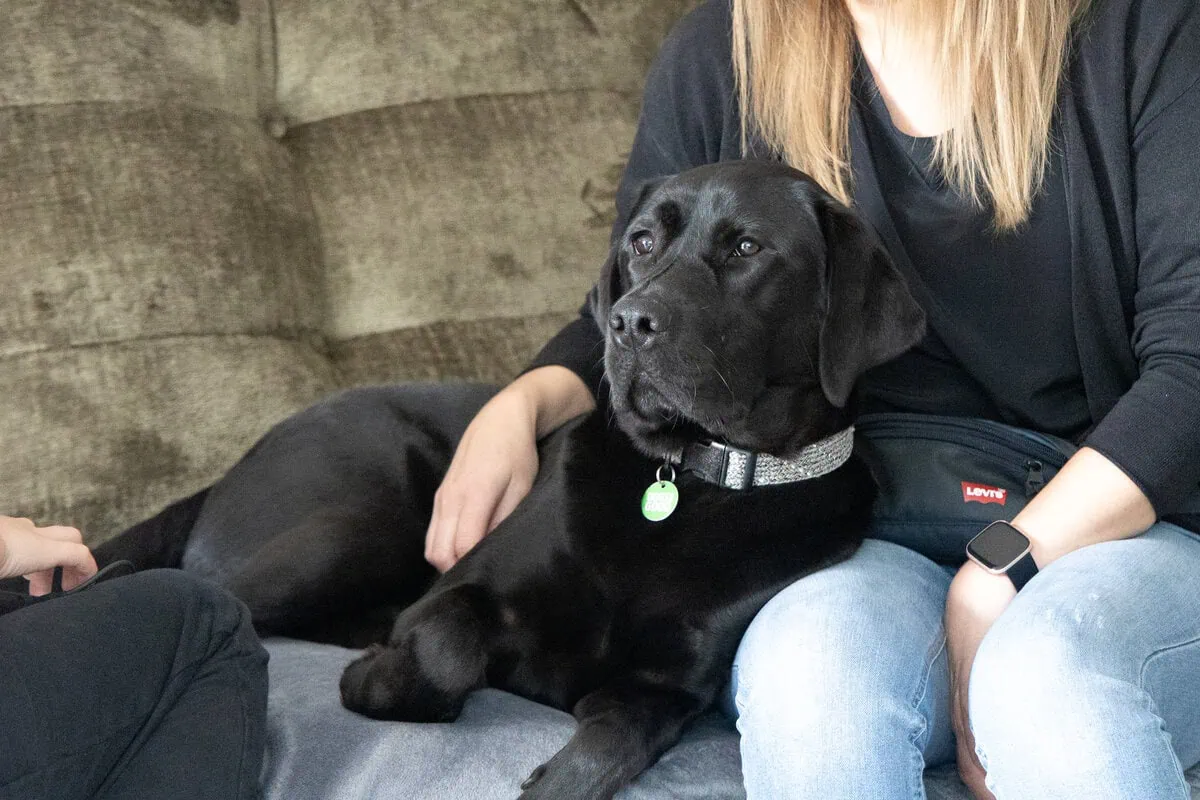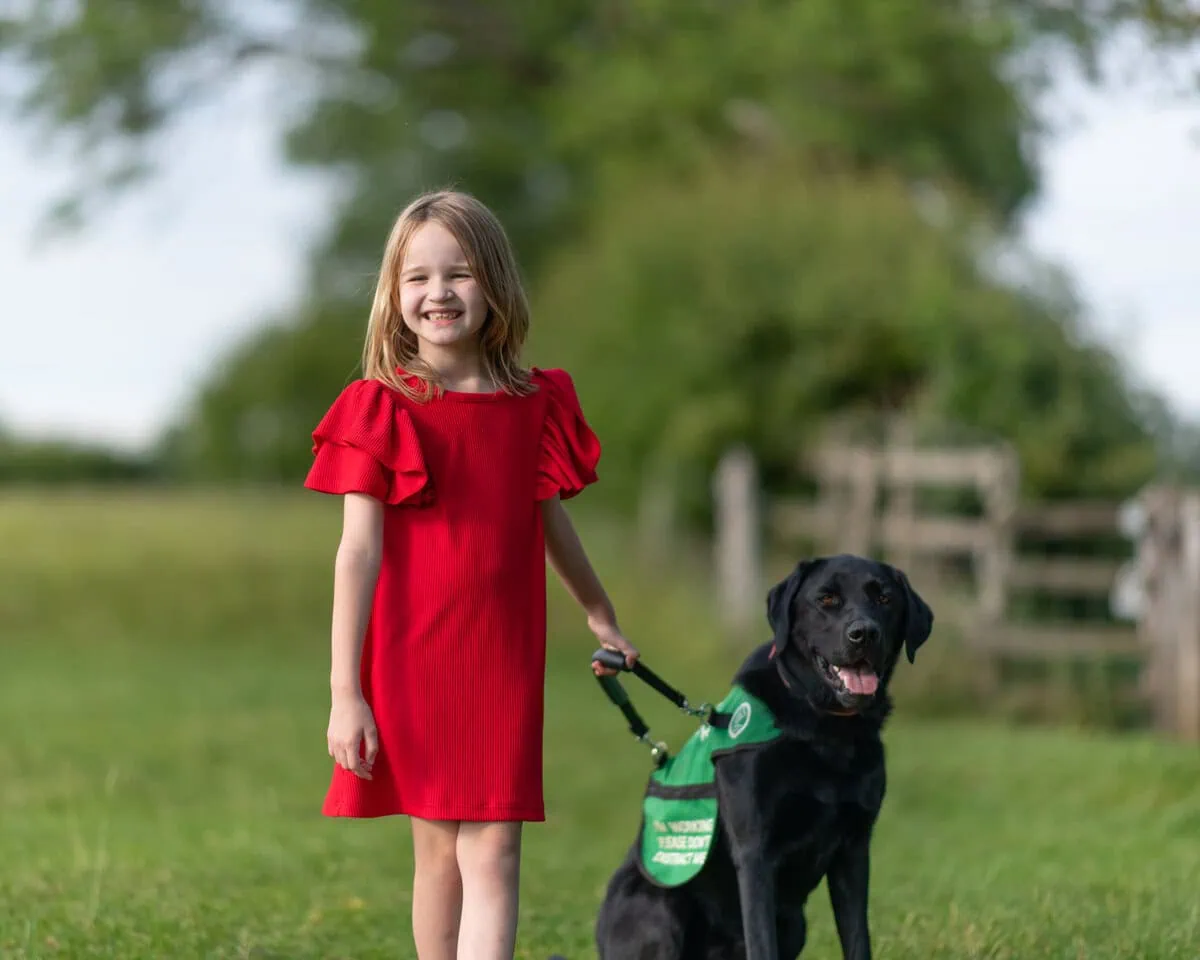
At Dogs for Good, we know that extraordinary things happen when people and dogs come together; we see it with every life-changing partnership we create. We know that if you get it right for dogs, you get it right for people and it all starts with good, two-way communication. So, here are a few things to chew over and get you started.
Understand from their point of view
The best way to try and communicate more positively with your dog is to look at everything from your dog’s perspective. Their view is entirely different to yours.
Try hard not to humanise what they’re doing as it will lead you down the wrong path.
-
Rather than a protest, it’s upset
-
It’s not guilt, it’s worry/anxiety
-
It’s not naughtiness, it’s a natural response to a given situation
Praise and encouragement
The very best thing you can do is to keep asking yourself what you’re doing to support your dog. Patience, practice, preparedness, problem solving, creativity and humour are some of the best qualities in a responsible dog owner.
Notice day to day what your dog does well and take the time to let them know through praise and encouragement. For example, you’re working on loose lead walking and only react negatively to the times when your dog pulls, instead of positively to all the times that he or she has done well. Or maybe, only noticing when your dog lunges towards people or another dog but not praising the times that that he or she walked calmly past without incident.
Respond positively
Your response to whatever your dog does is what they’ll take away from an interaction.
For example, if they’re trying to move away from something because they’re scared, pulling them closer to whatever it is isn’t a supportive or positive way forward. All a dog will take away from that interaction is that it’s all far worse than they’d first imagined.
If their response is enormous fear, it’s best to remove or walk away from the object or, if they’re just wary, you could sit with them as they explore while calmly interacting with positive feedback until they feel less fearful.
Set them up for success
Always set your dog up for success but accept that there are going to be times when you don’t get it right. When this happens, try to think of another way of achieving it.
For example, if you want your dog to settle nicely in a café, make sure that you’ve prepared the ground first. You could try visiting the café together at a quieter time and keeping the visit short and build up to a longer visit as and when they’re comfortable in that environment.
Take their mat and a chew, perhaps some high value treats such as carrots or cheese. If things don’t go well, don’t be disheartened and be prepared to calmly leave, think how you might support your dog more and try again another time. Also, consider that perhaps your dog will never be happy in that environment and the most responsible thing to do is leave him or her at home.
Tell them they’re a good dog
Your dog will never tire of hearing what you’ve got to say – it means that you’re engaging with them. And while they might not understand exactly what you’re saying, how you’re saying it speaks volumes.
For example, praising them in a higher-pitched voice will let them know that what they did was positive. Remember to match your pitch to the situation though; if they’ve come back to you when you’ve recalled them on a walk, a big fuss is appropriate. If they’ve settled nicely in the car, an effusive vocal response is likely to drive up excitement.
While you don’t want to be constantly on your dog, checking in with them regularly is a good thing to do. If you’re on a walk, give them time to sniff, explore and be a dog but a gentle ‘Hi, all OK?’ with a little head scratch lets them know all is well and they’ll be reassured.
Remove them from negative situations
If your dog isn’t coping in a given situation, support them by calmly taking away the object of their distress or moving both of you further from it.
Check your mood
Remember that your own mood will affect your dog and communication with your dog. For example, you’re stressed, frustrated, angry or upset and it’s time to take your dog for a walk.
Try to remember that your dog is looking forward to their walk and also looking forward to spending some time with you. They will feel your mood and your walk together might be less than enjoyable. You might not get good recall that day - would you want to come back to you in that mood? Or, you’re trying to do some simple training with your dog and he or she is not understanding you. You get more and more frustrated and your dog then starts to associate that time together in a negative way.
So, wherever possible, try and remember how your mood might affect your dog. On the plus side, a walk with your dog is almost guaranteed to make you feel better.
Help support our life-changing work...
Imagine if everyday tasks were so challenging or physically demanding they affected your quality of life. For many people living with a disability or families with a child with autism, that is their reality. Now imagine if a specially trained four-legged friend could restore your, or your family’s, independence.
The demand for our services is high and we can’t help as many people as we would like to without more funding. Please help us continue to bring people and dogs together to help make everyday life possible in so many extraordinary ways.
Every contribution, whatever size, is important and helps us make a difference.
